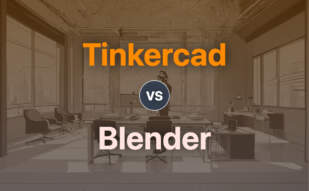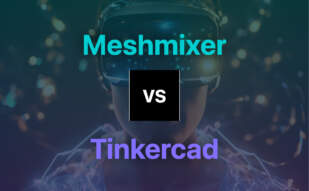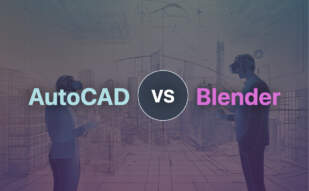AutoCAD excels in drafting, 3D design and architecture, offering powerful customization with API support, suitable for professional designers across industries. Tinkercad, a user-friendly modeling software, shines with its intuitive interface, hassle-free design methods, and compatibility with AR and 3D printing, ideal for beginners and educational purposes.
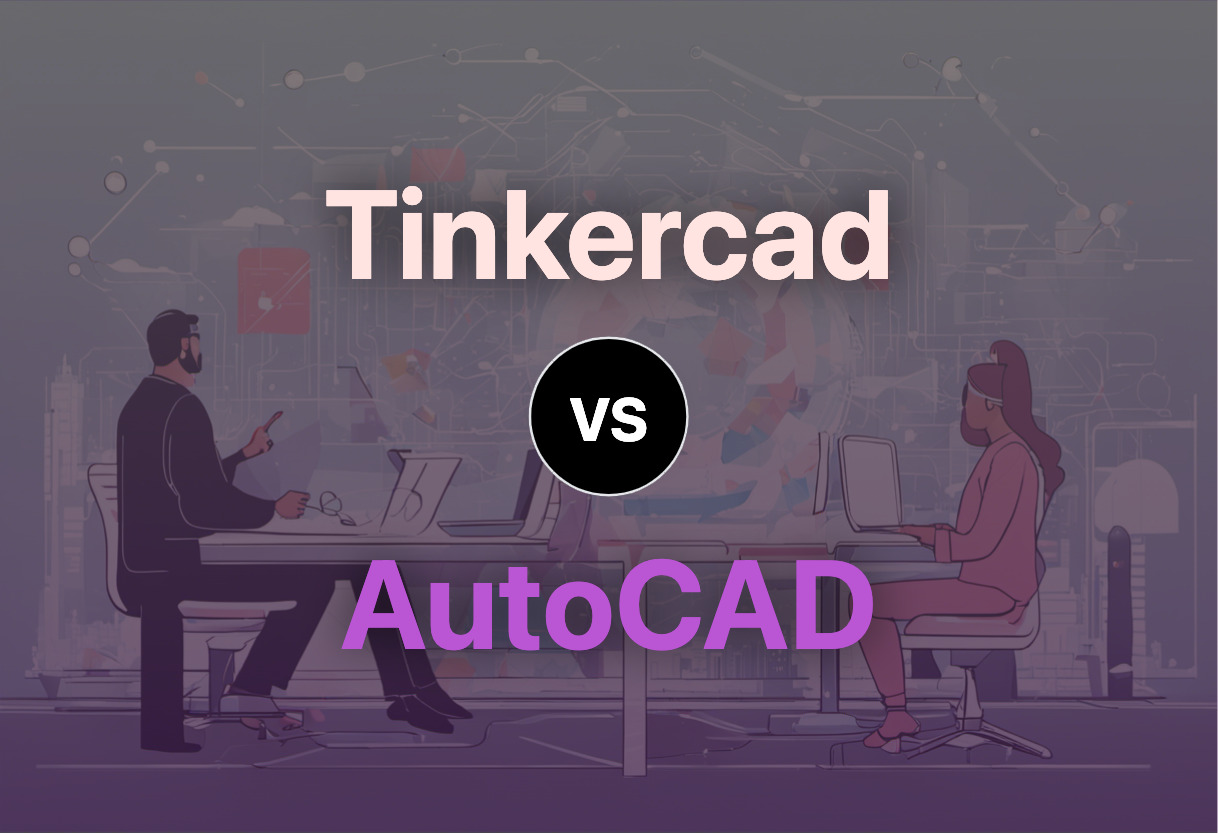
Key Differences Between Tinkercad and AutoCAD
- AutoCAD, established in 1982, is designed to cater to professionals, featuring CAD and drafting in 2D and 3D, whereas Tinkercad, introduced in 2011, aims towards accessibility, often chosen by beginners and educators.
- AutoCAD affords deep customization via APIs, whereas Tinkercad limits its capabilities with user-friendly CSG and built-in JavaScript editor.
- AutoCAD delivers vertical products, such as AutoCAD Architecture and Civil 3D, while Tinkercad includes 3D printing platform features, supporting STL, OBJ and SVG format.
- Tinkercad commands a robust 3D printing platform, easy drag-and-drop functionality, and an interactive AR experience while AutoCAD specializes in visualization, simulation, and construction with advanced design calculations.
| Comparison | Tinkercad | AutoCAD |
|---|---|---|
| Initial Release | 2011 | 1982 |
| Ownership | Autodesk | Autodesk |
| Platform | Web-Based | Desktop Application |
| Application Type | 3D Modeling | 2D & 3D CAD Design |
| Entry Level Use | Yes | No |
| Formats Supported | STL, OBJ (3D) and SVG (2D) | Multiple including those used by 3D printers |
| Unique Features | Design structures using LEGO bricks, Export models to Minecraft Java, Built-in JavaScript editor for custom shapes | Vertical products creation like AutoCAD Architecture, APIs for customization |
| Usage in Industries | Education, Beginners in Design | Aerospace, Automotive, Architecture, Animation, Fashion, Medical Devices, Oil and Gas |
| Learning Resources | Yes | Yes |
| Pricing Structure | Free Software | Subscription Based |
| Integrated Tools | Yes | Yes |
| User Friendliness | Yes | No |
What Is Tinkercad and Who’s It For?
Tinkercad is a popular, browser-based, 3D modeling software birthed by Autodesk, conceived with an objective of making 3D modeling accessible to the general public. Launched in 2011, by ex-Google engineer Kai Backman and Mikko Mononen, Tinkercad has since made 3D design, electronics, and coding free-flowing, empowering novices to seasoned professionals with an enhanced creative experience. This gateway to 3D design is targeted at all, from educators instilling a love for design in students to makers seeking to bring unique ideas to life.

Pros of Tinkercad
- Free, and universally accessible via WebGL-enabled browser
- Simplified Constructive Solid Geometry with drag and drop functionality
- Export 3D models to Minecraft and design structures using Lego bricks
- Compatible with iPad, and brings designs to life with Augmented Reality
Cons of Tinkercad
- Though comprehensive, more complex designs may require advanced software
- Relies on internet connectivity as it’s online-based
What Is AutoCAD and Who’s It For?
Brought to each of us by Autodesk as the first CAD (Computer Aided Design) system designed for PCs back in 1982, AutoCAD has since been the go-to software for producing precise 2D and 3D drawings. From architects and project managers to animators and engineers, computer-aided design and drafting find a reliable ally in AutoCAD for ideation, design production, and quick calculations across categories.
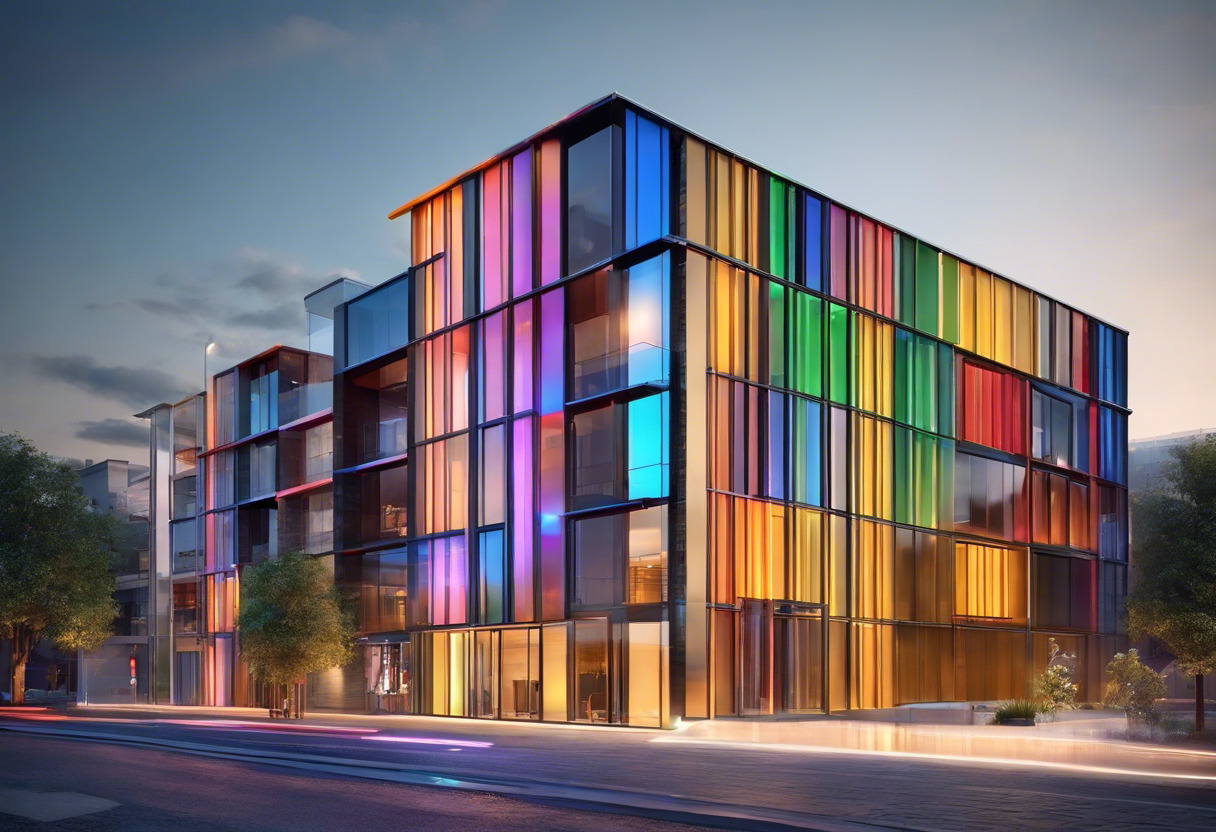
Pros of AutoCAD
- First CAD system for PCs, established and reliable, with over 31 upgraded versions since release
- Application Programming Interfaces (APIs) enabled for automation and customization
- Integrates with other applications such as 3D Max
- Used across various industries including aerospace, automotive, construction, and more
Cons of AutoCAD
- Subscription pricing since August 2016, ceasing perpetual licenses
- May require a steep learning curve for beginners
What’s Your Perfect Design Match? Tinkercad or AutoCAD
In the dynamic sphere of 3D modeling, Tinkercad and AutoCAD have emerged as top players. Let’s take a precise look at which tool caters to individual user needs more effectively.
School/Educational Use
Tinkercad, with its user-friendly design, easy-to-use interface, and secured environment, is an apt pick for school and educational use. Backed by credible recognition and extensive support resources, it ensures a nurturing learning platform for young enthusiasts.
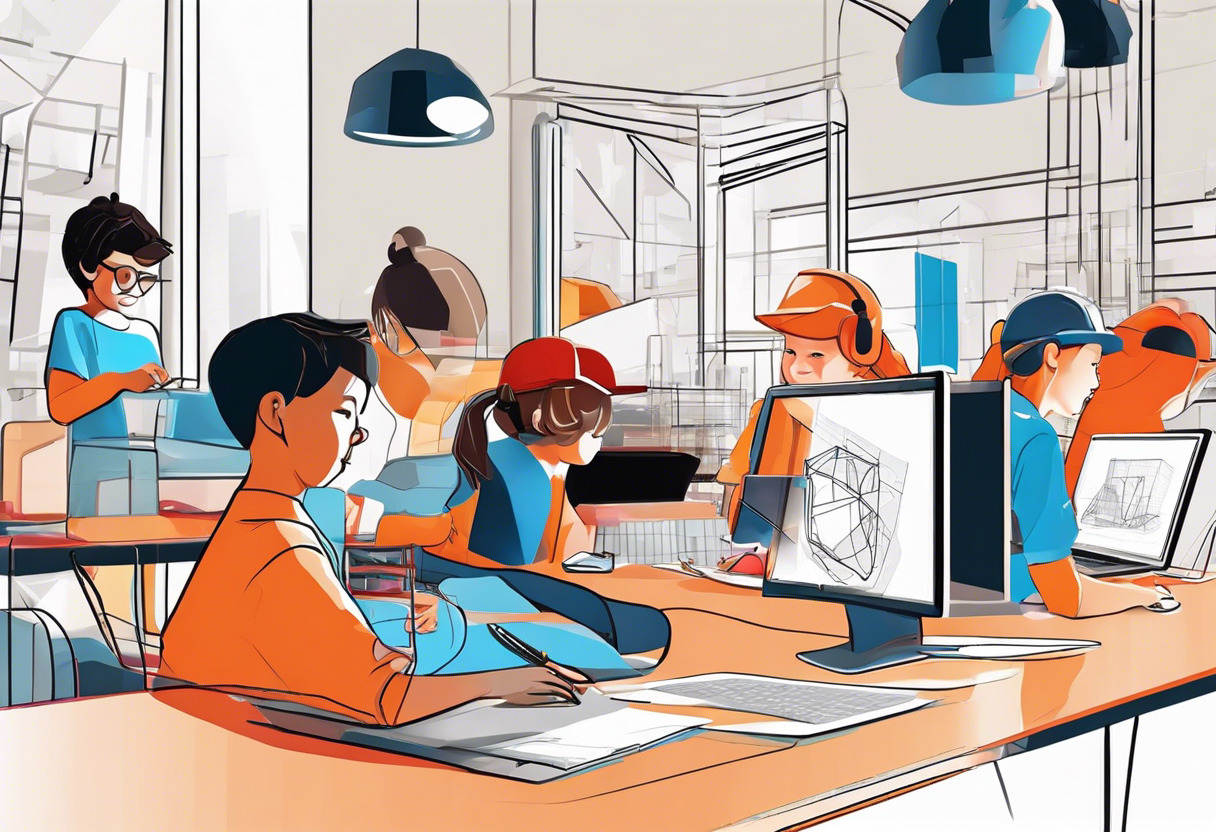
Beginners in Design
First-time builders and fledgling creatives will find Tinkercad more approachable. With the ability to transform 3D design into buildable brick models and create usable electronic circuits paired with abundant tutorial support, it provides a comprehensive starting point.

Professional CAD Users
For seasoned CAD users, AutoCAD flaunts technical precision and design flexibility. Its historical sophistication and industry-wide usage make it an ideal platform for advanced drafting and 3D modeling.
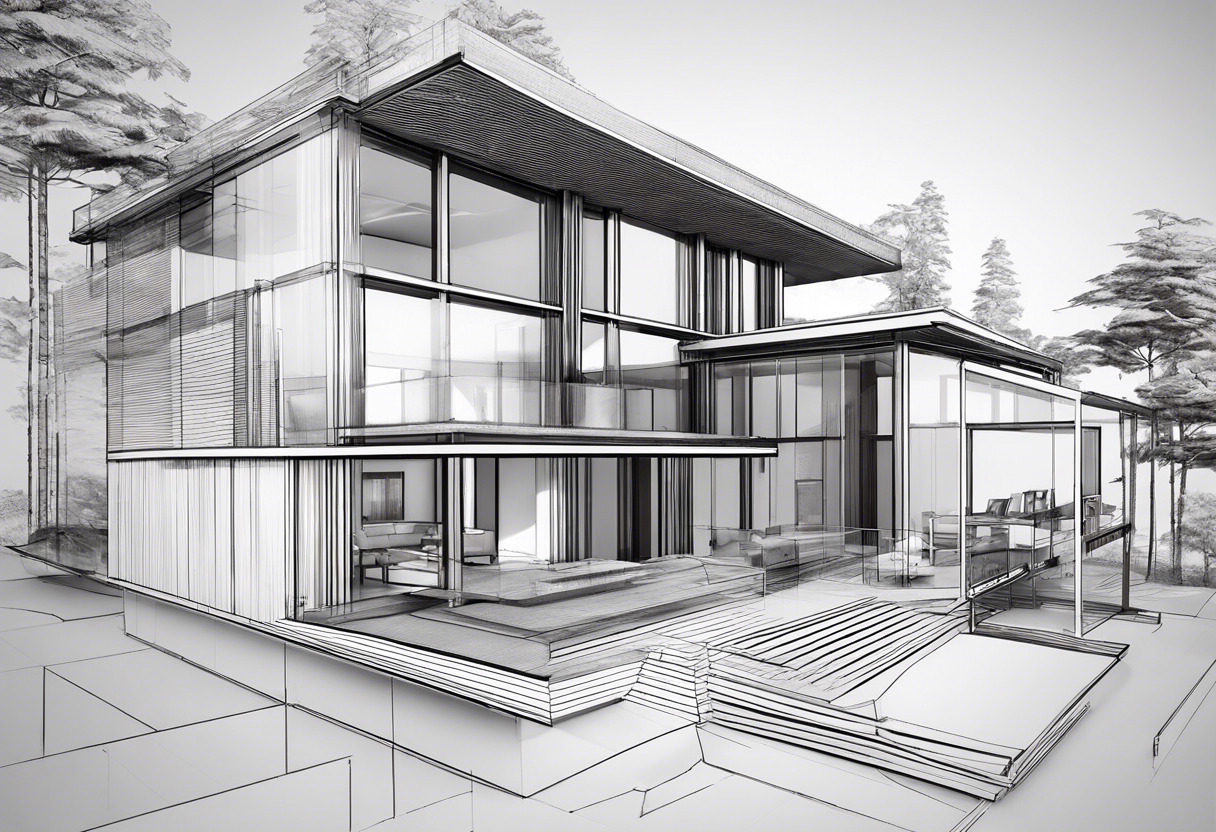
Industry Professionals
AutoCAD takes a decisive edge in industry utilizations from aerospace, automotive to construction, and entertainment. Its ability to integrate with other applications, offering file formats preferred by most 3D printers, and providing a spectrum of sophisticated features, establishes it as a favored choice for professionals.
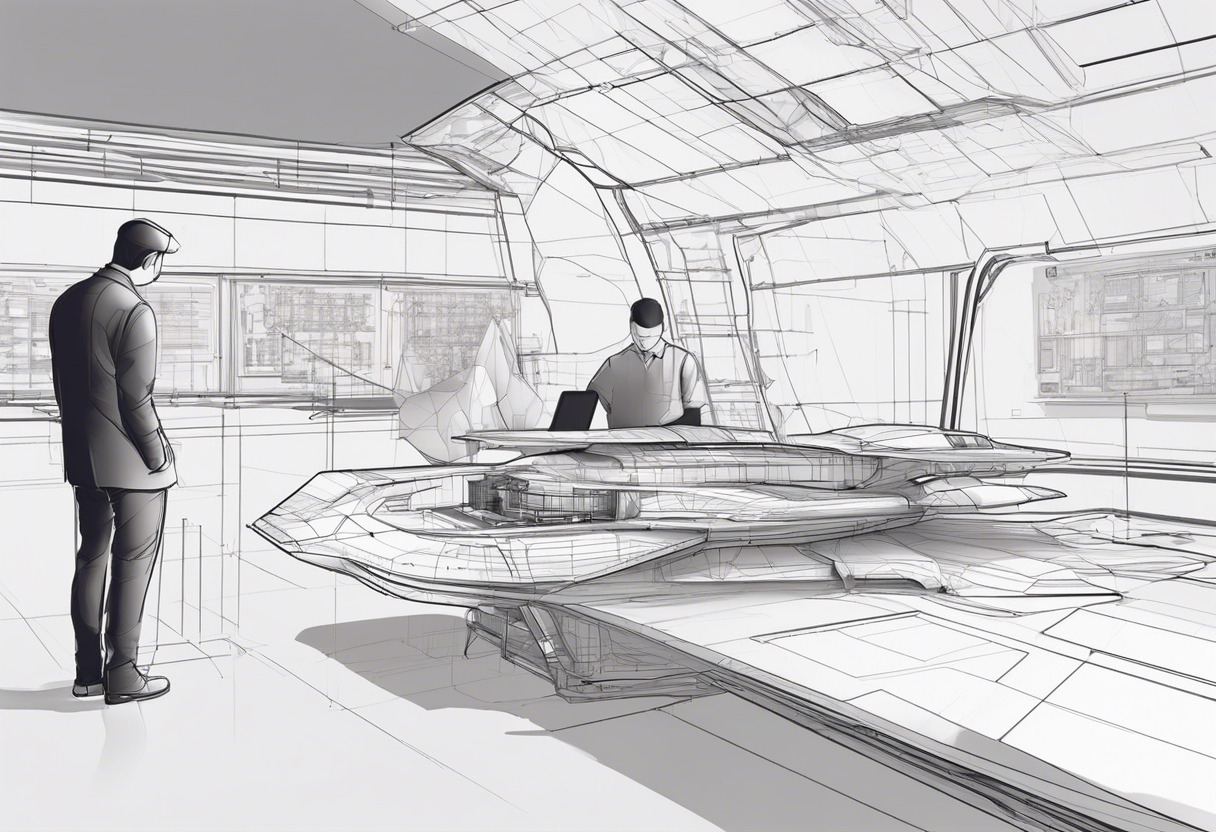
Keying on user-friendly design and simplicity, Tinkercad becomes the ideal choice for budding designers and educationists. For professionals and industry veterans, AutoCAD’s technical prowess and comprehensive features offer an unmatched design experience and superior precision.
Tiffany Brise
Content writer @ Aircada, patiently awaiting a consumer AR headset that doesn’t suck.



